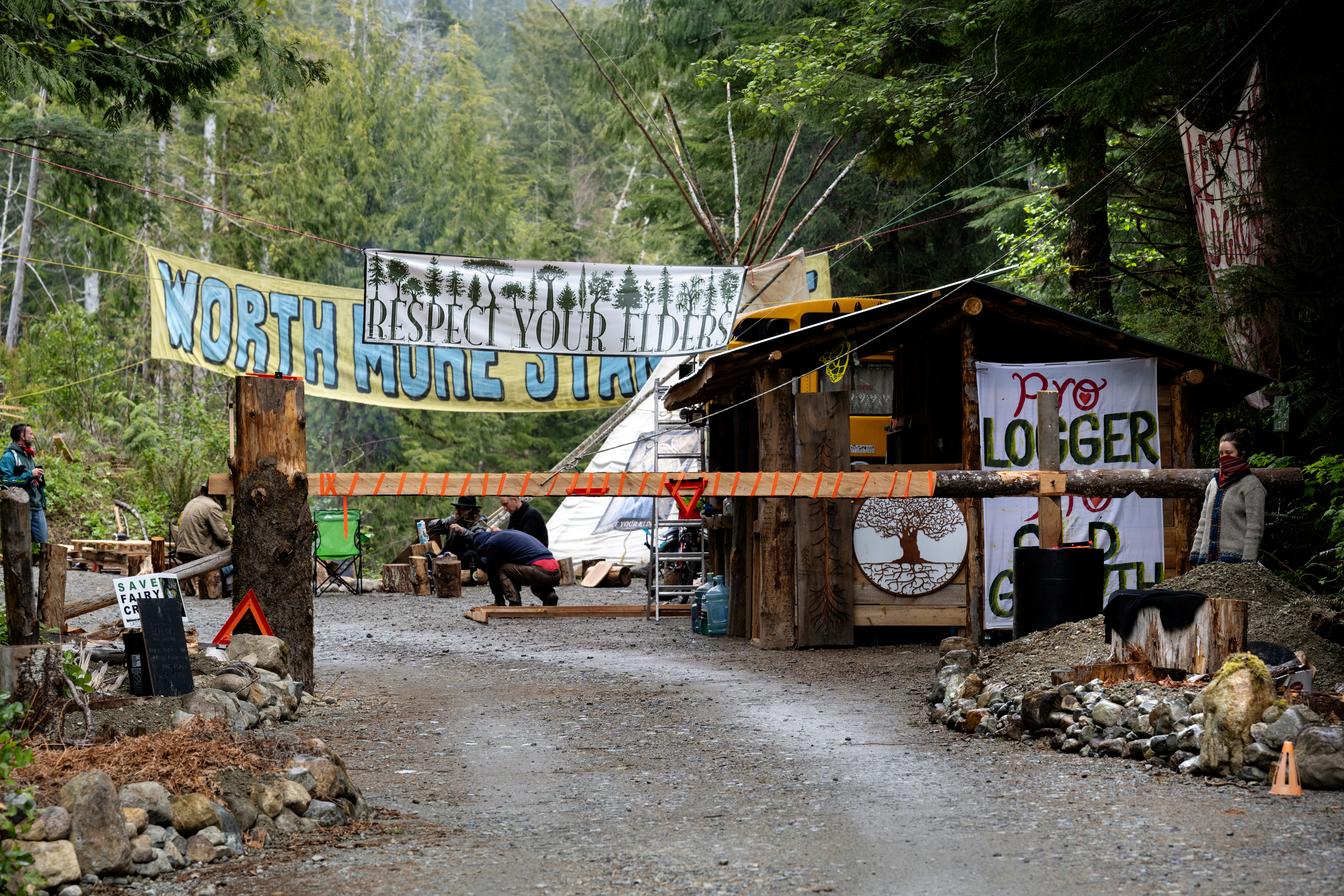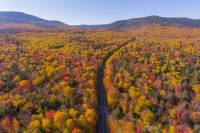Old-Growth Logging Protest Becomes Canada’s Largest Act of Civil Disobedience
Police have arrested nearly 900 people in the fight to stop the logging of ancient forests.
Earlier this week, in the remote coastal temperate rainforests of Vancouver Island, a series of protests against old-growth logging became the largest act of civil disobedience in Canadian history, when arrests topped 865 people. The prior record was also set on Vancouver Island. That was in 1993, also due to opposition to logging in nearby Clayoquot Sound.
The similarities have left many Canadians, who thought all this had been resolved, scratching their heads.
But for local environmentalists like Pia Massie, who was part of the original War in the Woods as well as today’s protests, “the fight to care for ancient forests has never stopped.”

At the heart of the current standoff is Fairy Creek, a pristine watershed in the southwest corner of Vancouver Island. Virgin old-growth forests, mostly of yellow cedar, blanket Fairy Creek. In this lush riparian environment, lichen curtains dangle from tree boughs and moss flourishes on every rock face.
Old-growth trees are hundreds of years old and have grown to massive heights and widths. They are critical in managing climate change. These trees serve as carbon sinks, help buffer against wildfire, and promote species diversity.
Fairy Creek is rare in that it’s still undisturbed by humans. It’s believed to be the last intact, untouched river valley (where trees grow the largest) on the south side of the island — but it’s not protected. And therefore, vulnerable to logging.
A Sliver of Old-Growth Forest Remains

Despite various studies demonstrating the value of leaving Canada’s remaining old growth standing, and reports stating how little is left (2.7%), the government continues to permit logging. And British Columbia is arguably the old-growth logging capital of the world. About 27% of the province’s annual timber harvest comes from old growth. On Vancouver Island, the number is higher: 50% of trees felled are old growth.
A few locals started what became the Fairy Creek Blockades with a single protest on August 9, 2020. As I previously reported for Outside, they blocked a new logging road that appeared from online satellite images to be heading into the forest surrounding Fairy Creek. Back then, the group jokingly referred to itself as the Rainforest Flying Squad, and the name stuck.
“Camps” of protesters are located on logging roads off of Pacific Marine Road, near the hamlet of Port Renfrew. When I visited the camps during the last week of June, the movement had swelled beyond the single road leading to Fairy Creek.
Blockades and ‘Forest Defenders’
I encountered about a dozen blockades and hundreds of “forest defenders,” some of whom had left jobs and families behind and were living out of tents and vans. Others, like Bari Precious, 73, a pottery teacher from across the island in Nanaimo, would go back and forth, spending the bulk of the week at camp and then returning home for a day or two to recover.
Some worked on the “front lines,” latching their bodies to obstacles built from logs, rocks, and concrete to make it difficult (and often dangerous) for police to extract and arrest them. Others prepared food, sorted donations, built portable restroom facilities, and shuttled supplies by foot to the more remote blockades.

Back then, the total number of arrests was only about 300. Forest defenders told me that the RCMP (Royal Canadian Mounted Police) was starting to ramp up enforcement to get protesters out of the way so that logging, which the blockades had halted in several key areas around Fairy Creek, could resume. They were no longer worried about the Fairy Creek watershed itself because on June 9, the BC government granted a 2-year deferral to any logging there, at the request of First Nations. But all the old growth in the adjacent forests was still at risk.
Case in point: Shortly before I arrived, the police had succeeded in clearing a blockade known as Caycuse on a road leading to a forest containing stands of old growth. The trees had already been clear-cut.
Teal-Jones Group, the logging company that did the harvesting in Caycuse and owns the rights to log within Fairy Creek and adjacent forests, told CTV News Vancouver Island that enough old growth is already protected in British Columbia. The company added that old-growth wood was “easier to work with” for certain high-value products because of its tighter grain.
The blockades in and around Fairy Creek are mostly located on the unceded lands of the Pacheedaht First Nation. Pacheedaht elder Bill Jones, 81, was at camp during one of the days I was there, to help buoy forest defenders’ spirits.
Police aggression was increasing, I learned, particularly toward indigenous land defenders from several different First Nations. These include Pacheedaht, Nuu-chah-nulth, Heiltsuk, Ditidaht, and Nêhiyaw. I met one young indigenous woman with bruises on her arms and torso from her violent extraction.
Civil Disobedience Has Not Halted Logging

The situation would only get worse for the land defenders. In the 2 months since I’ve left, arrests have tripled; the total to date is 891. Footage has surfaced showing police beating, dragging, and spraying protesters directly in the face with pepper spray, catalyzing demonstrations across the province demanding that the RCMP “stand down” at Fairy Creek.
Meanwhile, the RCMP has cleared all the blockades and, with the help of Teal-Jones employees, demolished the camps. Logging equipment has already moved back into position at the site of former camps and blockades.
As one forest defender, an environmental studies student at the University of Victoria who goes by the alias Sitka, told me, “It’s great that we’re getting more press for becoming the biggest act of civil disobedience ever in Canada, but that doesn’t change what’s happening on the ground.”
How long will the War in the Woods drag on? Some fear until there’s nothing left.
The post Old-Growth Logging Protest Becomes Canada’s Largest Act of Civil Disobedience appeared first on GearJunkie.

